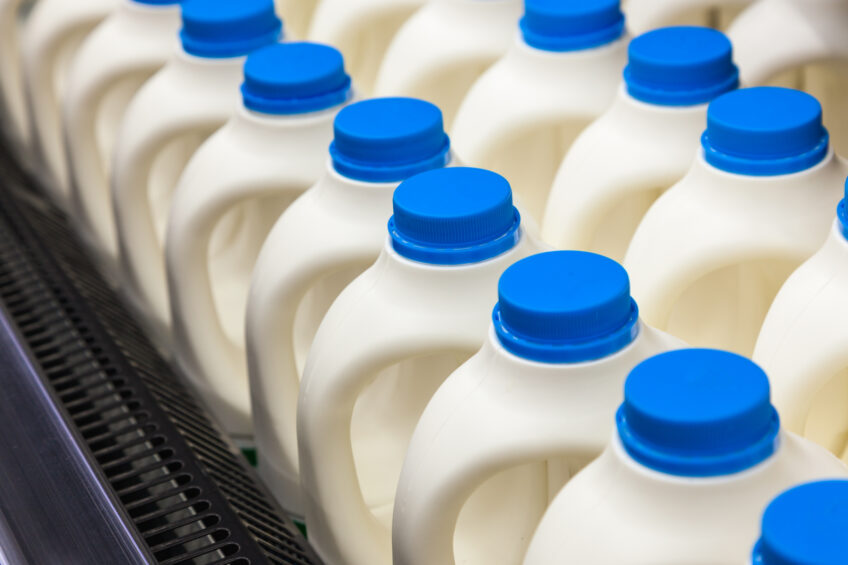A market view of the US dairy industry

The US dairy market has seen production levels rising slightly. Cheese and butter prices are up, partly due to higher domestic demands. What are other trends seen in the US dairy market? Mike McCully shares his view on these issues in his market review below.
US milk production in April was up 1.7% compared to a year ago and March was revised up from 1.2% to 1.4%. Cow numbers remain at the highest level since early 2009 and show little sign of declining, which provides an ample production base for the rest of 2015. For milk output, weakness in California (-2.1%) and New Mexico (-1.4%) was offset by continued strong gains in the Plains and Upper Midwest. Watch out for continued strength from these regions as the year progresses. For the 2nd half of the year, I expect California to recover to near flat vs. the previous year as the comparisons become easier (1st half 2014 production was strong while 2nd half was weaker). Total milk production for the US will likely continue in the 1-2% growth range as long as the weather remains near normal and feed costs don’t increase.
National dairy production up but so is demand
Inventory levels best summarise the US domestic dairy market situation. Cheese and butter stocks are near year ago levels while milk powder and whey products are well above last year. Total cheese stocks stood at 979 million lbs (444.06 million kg) on April 30, up 1.9% from last year, but Cheddar stocks, the price driver for the industry, were lower. Production is higher, but demand is keeping up, particularly domestic foodservice demand. In short, production will need to post larger increases to get stocks to move comfortably above last year and take the upside pressure off cheese prices. Butter stocks were expected to increase in April following the earlier Easter demand period. The April 30 butter stocks number jumped up to 230 million lbs (104.32 million kg), up 25% from March 31 and 23% higher than last year. The increase brought some comfort to market participants and prices have pulled back since the release of the Cold Storage report.
Cheese and butter prices
US cheese and butter prices continue to surprise to the upside due mainly to low stocks, largely ignoring their premium to global prices. Domestic demand has been strong with good foodservice demand helping cheese in particular. There are no signs that domestic sales growth will slow down. However, given the continued gap between US and global prices, US exports of cheese and butter are not expected to post any large increases. If cheese and butter production growth overwhelm domestic demand, prices will come under pressure. Until that happens, prices for both are forecasted to remain near current levels, but with more risk to the upside than downside. For cheese, prices are expected to range in the $1.60’s-1.80’s for the rest of the year with some possibility of $1.50’s with low potential for a move above $2.00. While butter stocks are building, the market is forecasted to trade in the $1.80-2.00 range. Butter has a tendency to surprise, so prices north of $2.00 would not be unexpected, although not forecasted currently.
Whey products and milk powder
While the cheese and butter stocks numbers have been bullish, the milk powder and whey complex stocks continue to be quite bearish. NFDM stocks have been running above year ago levels since mid-2014. Increased production capacity in the US and Europe has resulted in record high WPC stocks. Lactose stocks are also burdensome. None of these are expected to change for a while, thereby keeping pressure on prices at or near current levels for the rest of the year. Stocks are high, production continues to post decent growth, and export demand is not strong enough to pull stocks lower. While US cheese and butter are partly insulated from the global market, whey products and milk powders are largely dependent on trade with 50% or more of production exported. Furthermore, the strong US dollar does not help US export competiveness as it makes US product relatively more expensive than other origins (e.g. Europe, New Zealand).
About the author
Mike McCully owns The McCully Group, LLC, a strategic consulting firm that provides supply chain solutions to dairy and food companies. The McCully Group has worked with many of the top dairy companies in North America as well as major multi-national food companies. Client projects include business analysis, procurement strategy, economic forecasting, and commodity risk management. Prior to forming The McCully Group, Mike worked at Kraft Foods for over 15 years where he held management roles in dairy, meat, and grain purchasing.
Join 13,000+ subscribers
Subscribe to our newsletter to stay updated about all the need-to-know content in the dairy sector, two times a week.











